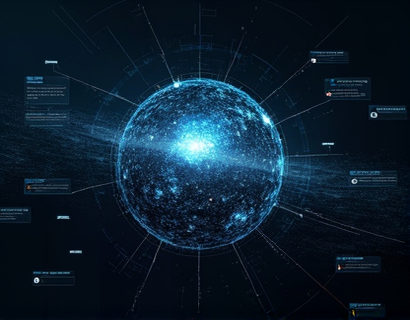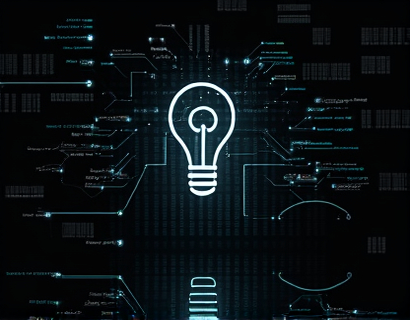Maximize Your Multi-Channel Announcements: A Strategic Guide for Businesses and Individuals
In today's fast-paced digital landscape, making effective announcements across multiple channels is crucial for businesses and individuals aiming to maximize their reach and engagement. This comprehensive guide provides expert strategies to streamline your multi-channel communication, ensuring your messages are seen and heard by your target audience. Whether you're a business owner or an individual looking to enhance your communication strategy, this guide offers valuable insights and practical tips to optimize your announcements across various platforms.
Understanding Multi-Channel Communication
Multi-channel communication refers to the strategy of reaching out to your audience through multiple platforms and channels. This approach allows you to connect with your audience where they are most active, increasing the likelihood of your message being seen and acted upon. The key to successful multi-channel communication lies in consistency, clarity, and timing. By ensuring that your message is uniform across all channels, you build trust and credibility with your audience.
Identifying Your Channels
The first step in maximizing your multi-channel announcements is to identify the platforms where your audience is most active. Common channels include social media platforms like Facebook, Twitter, Instagram, and LinkedIn, as well as email newsletters, blogs, and company websites. Each channel has its unique features and audience demographics, so it's essential to understand where your target audience spends their time.
For instance, LinkedIn is ideal for professional and business-related announcements, while Instagram is better suited for visual content and younger audiences. Twitter is great for real-time updates and engaging in conversations, and email newsletters allow for more detailed and personalized communication. By assessing your audience's preferences and behaviors, you can select the most effective channels for your announcements.
Crafting Your Message
A well-crafted message is the heart of any successful announcement. Your message should be clear, concise, and compelling. Start by defining the core message you want to convey. What is the primary information you need to share? What action do you want your audience to take? Once you have a clear objective, structure your message accordingly.
Begin with a strong headline or subject line that grabs attention. Use the first few sentences to provide context and highlight the key points. Keep your message concise to maintain engagement, especially on platforms with character limits like Twitter. Use bullet points or short paragraphs to break up the text and make it easier to read. Finally, include a clear call-to-action (CTA) that guides your audience on what to do next.
Customizing for Each Channel
While consistency is key, each channel requires a slightly different approach to maximize impact. Customizing your message for the specific platform ensures that your content is relevant and engaging to each audience segment. Here are some tips for customizing your announcements across different channels:
- Social Media: Use visuals, hashtags, and emojis to make your posts stand out. Keep text concise and use platform-specific features like Stories or Reels to increase visibility.
- Email Newsletters: Personalize the content based on subscriber preferences and segment your audience for targeted messaging. Include visuals and a clear CTA to encourage action.
- Blogs and Websites: Provide detailed information and supporting resources. Use SEO best practices to improve visibility and drive traffic from search engines.
- Company Announcements: Use formal language and include relevant company information. Distribute these through multiple channels to reach a broader audience.
By tailoring your message to the unique characteristics of each channel, you can enhance engagement and ensure your announcement resonates with your audience.
Timing Your Announcements
The timing of your announcements can significantly impact their effectiveness. Consider the best times to post based on your audience's online behavior. For example, business professionals may be more active on LinkedIn during weekdays, while younger audiences might be more engaged on Instagram in the evenings.
Use analytics tools to track engagement metrics and identify the optimal times for each channel. Experiment with different posting times to find what works best for your specific audience. Additionally, consider the urgency of your announcement. Time-sensitive information should be shared promptly to maximize impact.
Leveraging Automation Tools
Managing multi-channel announcements can be time-consuming, but automation tools can streamline the process. These tools allow you to schedule posts in advance, ensuring consistent and timely communication without manual effort. Popular automation platforms include Hootsuite, Buffer, and Sprout Social.
When using automation tools, ensure that you maintain control over your content and customize each post as needed. Set up templates for different channels to save time and maintain brand consistency. Regularly monitor the performance of your automated posts to refine your strategy and improve results.
Monitoring and Analyzing Performance
To maximize the effectiveness of your multi-channel announcements, it's crucial to monitor and analyze their performance. Use analytics tools provided by each platform to track key metrics such as reach, engagement, click-through rates, and conversion rates. These insights will help you understand what works and what doesn't, allowing you to adjust your strategy accordingly.
Set specific goals for your announcements, such as increasing website traffic, generating leads, or boosting brand awareness. Regularly review your progress against these goals and make data-driven decisions to optimize your approach. For example, if a particular type of content performs better on a specific channel, create more of that content and refine your messaging.
Engaging with Your Audience
Engagement is a two-way street. Responding to comments, messages, and mentions shows that you value your audience's feedback and are committed to building a relationship. Active engagement can also help address any concerns or questions, enhancing your brand's reputation.
Use social listening tools to monitor conversations related to your brand and industry. Join relevant groups and forums to participate in discussions and establish yourself as an authority in your field. By actively engaging with your audience, you can foster loyalty and encourage word-of-mouth promotion.
Creating a Content Calendar
A content calendar is an essential tool for managing and organizing your multi-channel announcements. It helps you plan and schedule content in advance, ensuring a consistent flow of information to your audience. A well-structured content calendar should include:
- Date and time for each post
- Channel and platform
- Content type (e.g., text, image, video)
- Key message and CTA
- Status (planned, scheduled, published)
Using a content calendar allows you to visualize your communication strategy and make adjustments as needed. It also helps prevent duplicate posts and ensures that you cover a variety of topics and formats to keep your content fresh and engaging.
Measuring ROI
To truly understand the value of your multi-channel announcements, it's important to measure the return on investment (ROI). ROI helps you quantify the impact of your communication efforts in terms of business outcomes, such as sales, leads, or brand awareness.
Track the performance of your announcements by linking specific calls-to-action to measurable goals. Use UTM parameters in your URLs to track traffic and conversions from each channel. Analyze the data to identify which channels and types of content drive the most value. This information will guide your future content strategy and help you allocate resources more effectively.
Conclusion
Maximizing your multi-channel announcements requires a strategic approach that considers your audience, channels, message, timing, and performance. By following the guidelines outlined in this guide, businesses and individuals can streamline their communication efforts and enhance message visibility across various platforms. Remember to stay flexible, adapt to changes in the digital landscape, and continuously refine your strategy based on data-driven insights. With the right approach, you can effectively connect with your audience and achieve your communication goals.










































